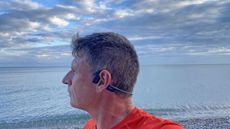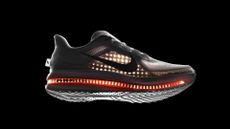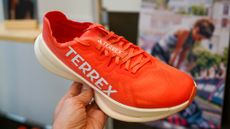ActiveRunning12 marathon training tips you’ve never considered but really shouldCrush your marathon goals with our essential training tips for successWhen you purchase through links on our site, we may earn an affiliate commission.Here’s how it works.
ActiveRunning12 marathon training tips you’ve never considered but really shouldCrush your marathon goals with our essential training tips for successWhen you purchase through links on our site, we may earn an affiliate commission.Here’s how it works.
Crush your marathon goals with our essential training tips for success
When you purchase through links on our site, we may earn an affiliate commission.Here’s how it works.
(Image credit: Getty Images)

(Image credit: Getty Images)
With this year’s Tokyo Marathon happening this weekend, many runners will likely be inspired to run a faster marathon. Those who have already done one (or maybe even a few) will know running a marathon has a significant toll on your body; however, some less-known training tips might help you get closer to your dream marathon PB.
The most important thing, of course, is not to go wild! Instead, gradually integrate the below tips into your training routine. Prioritise consistency and be patient with yourself. Getting better at any sport isn’t a linear process, and if you experience any dips in your motivation or physical improvement, switch things up a bit to get out of that rut.
Two things you’ll definitely need before you set off to become the fastest runner among your friends on Strava are a pair of running shoes and a running watch. Luckily, we have guides for both –best running shoesandbest running watches– to help you decide which one to get.
1. Focus on your breathing
Practice diaphragmatic breathing techniques to improve oxygen intake and endurance during long runs. Breathing exercises likepursed-lip breathing(external link) and belly breathing can help optimise oxygen delivery to your muscles.
Arecent studypublished in 2023 showed that although the “connection between breathing and sports performance is still unclear, athletes can obtain benefits in focus and concentration using slow breathing strategies.” Marginal gains, here we come!
If you prefer to use aid, devices like theAirofit Pro 2.0could strengthen your lungs and diaphragm.
2. It’s all in your head
We spend a lot of time training our cardiovascular system to be more ready for marathons – what about improving your mental resilience? Techniques like visualisation and positive self-talk can help you break through the wall during your longest runs.
Sign up to the T3 newsletter for smarter living straight to your inbox
Get all the latest news, reviews, deals and buying guides on gorgeous tech, home and active products from the T3 experts
To help you get going, visualise yourself crossing the finish line strong and repeat positive affirmations during challenging segments of your runs to enhance mental resilience and focus. It might feel strange initially, but affirmations like ‘I’m strong’ or ‘I’m in control’ can help you power through even your hardest sessions.
(Image credit: Getty Images)

(Image credit: Getty Images)
3. Experiment with fuelling strategies
Test different nutrition and hydration strategies during your long training runs to find what works best for you. Consider experimenting with fueling options like gels, chews, real food, and electrolyte drinks to optimise energy levels and prevent bonking during the race.
“Fuel little and often in your long runs,” says Liz Yelling, Double Olympian andRheon Labsambassador, “Maintaining energy levels is key to going the distance.” Never just assume what works for others will work for you. Some runners can down gels without missing a beat, while others might find consuming gels a stomach-upsetting experience.
4. Prioritise recovery techniques
Invest in recovery tools such asfoam rollers,massage guns, andcompression socksto aid in muscle recovery and reduce post-run soreness. Incorporate active recovery activities like yoga, swimming, and light stretching to promote circulation and mobility.
If you have more cash to splash, try pneumatic boots. TheTherabody RecoveryAir JetBootsand theRecovapro Airare both excellent options and will help you recover more efficiently after your runs.
(Image credit: Getty Images)

(Image credit: Getty Images)
5. Cross-train strategically
Incorporate cross-training activities that complement your running regimen, such as cycling, swimming, or strength training. Strengthening supporting muscle groups and improving overall fitness can enhance running efficiency and reduce the risk of injury. Here are sevenexercises to increase running speed, according to a former sprint champion, to get you started.
6. Work on running form
Focus on improving your running form to minimise energy expenditure and reduce the risk of overuse injuries. Consider working with a running coach or undergoing gait analysis to identify areas for improvement and implement targeted drills and exercises.
(Image credit: Eren Li / Pexels)

(Image credit: Eren Li / Pexels)
7. Optimise sleep quality
Your most effective recovery tool is sleep. No matter how hard you train or how much your gear costs, if your sleep isn’t right, you won’t be able to progress in your running efforts without risking constant injuries and illness down the line.
Prioritise adequate sleep and establish a consistent sleep schedule to support recovery and performance. Create a sleep-friendly environment, practice relaxation techniques, and limit exposure to electronic devices before bedtime to promote restorative sleep.
Awell-cited paperfrom 2008 says, “Along with being an integral part of the recovery and adaptive process between bouts of exercise, accumulating evidence suggests that increased sleep duration and improved sleep quality in athletes are associated with improved performance and competitive success.”
8. Vary terrain and elevation
You should also adjust your running form when tackling hills and downhills. When running uphill, lean slightly forward from your ankles and use your arms to help propel you forward. When running downhill, focus on maintaining control and taking shorter, quicker strides to reduce the impact on your joints.
(Image credit: Getty)

(Image credit: Getty)
9. Practice pacing strategies
Develop pacing strategies tailored to the specific demands of the marathon course. Practice running at different paces during training runs to familiarise yourself with various intensities and learn to gauge effort levels effectively.
“Get your marathon pace dialled in,” recommends Liz Yelling, “have an understanding of your estimated finish time and get the feeling of that pace engrained in your senses.”
Most runners don’t factor in slight deviations in distance over the course of marathons. Your official time is when you cross the finish line, but you aren’t running in a straight line, so you’ll likely run more than 26.2 miles. Taking this into account can help avoid disappointment when you face your official time.
10. Arm swing
Arm swing technically falls under running form, which we discussed above, but it’s worth mentioning separately. If you’ve ever observed runners, you might have noticed they swing their arms very differently.
Not many runners, no matter how dedicated they are to their craft, pay much attention to what they do with their arms during longer runs. Sadly, this could prevent said runners from reaching their maximum potential.
Your arms should swing naturally at your sides, with your elbows bent at approximately 90 degrees. Avoid excessive arm movement across your body, which can waste energy and throw off your balance.
11. Core engagement
Another thing you won’t see runners do too often is planks, or any other core exercise, for that matter. A shame, as engaging your core muscles maintains stability and supports your posture throughout the run. A strong core can help improve your running form and prevent injuries.
Core workouts don’t have to be complicated: here is a3-move core workoutfor a functional core. If you find those too hard, try these fivebeginner-friendly core exercisesinstead.
12. Compression gear
We mentioned compression socks above, but wearing other types of compression wear, such as sleeves or tights, during your runs can improve circulation, reduce muscle fatigue, and enhance recovery. Compression gear can be especially beneficial for long-distance runners like marathoners.
Ameta-studyfrom 2013 suggests that research results looking into the subject “indicate that compression garments are effective in enhancing recovery from muscle damage.” Worth a try?

Build bigger arms in just 30 minutes with this 5-move dumbbell-only workoutIt’ll leave the biceps and triceps popping!
It’ll leave the biceps and triceps popping!

OMEGA puts the moon on your wrist with its new Speedmaster Moonphase MeteoriteOMEGA adds two new Moonphase Meteorite watches to its Speedmaster line-up
OMEGA adds two new Moonphase Meteorite watches to its Speedmaster line-up

6 running mistakes beginners should avoid, according to an expertIf you want to avoid injury and improve your performance
If you want to avoid injury and improve your performance

Sore lower back after running? A physio says these three exercises can helpIf you’re prone to back aches after a run, give these a try!
If you’re prone to back aches after a run, give these a try!

The best fitness advent calendars for workout warriors and runnersStuffed with socks, protein bars and more!
Stuffed with socks, protein bars and more!

Shokz OpenRun Pro 2 review: Smart bone conduction headphones with enhanced bassShokz’s headphones changed my opinion about running while listening to music, and now I struggle to go out without them
Shokz’s headphones changed my opinion about running while listening to music, and now I struggle to go out without them

How to survive an ultramarathonFear and self-loathing (and lots of love and lessons learned) on the Montane Lakeland ultra, the UK’s equivalent of the UTMB
Fear and self-loathing (and lots of love and lessons learned) on the Montane Lakeland ultra, the UK’s equivalent of the UTMB

Forget sportswatches, here’s the best way to track a runWorld’s first smart running track has been announced
World’s first smart running track has been announced

Nike pumps up the pace with the turbocharged Pegasus Premium shoesI sat down with Tony Bignell, VP of Footwear Innovation at Nike, to talk about all things Pegasus
I sat down with Tony Bignell, VP of Footwear Innovation at Nike, to talk about all things Pegasus

Adidas Terrex Agravic Speed Ultra review: conquering downhillBe the Master of Descent with the latest innovation from the Brand with the Three Stripes: meet the Agravic Speed Ultra
Be the Master of Descent with the latest innovation from the Brand with the Three Stripes: meet the Agravic Speed Ultra